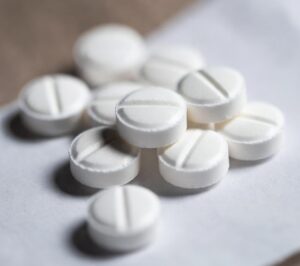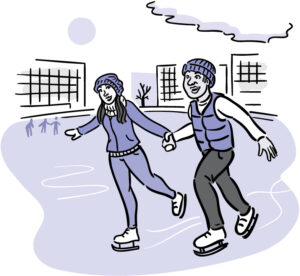KEY POINTS
- After a tornado, there are many hazards you could face, including injuries from walking among debris or entering damaged buildings.
- Learn how to keep yourself and your loved ones safe after a tornado.
Stay safe after a tornado
Immediately after a tornado
If you are trapped, attract attention to yourself.
- Try to attract attention to yourself. Send a text, bang on a wall or pipe, or use a whistle to help rescuers find you.
- Use a cloth or mask to protect your mouth, nose, and eyes from dust.
Check for injuries.
- Do not attempt to move seriously injured people unless they are in immediate danger of further injury. Get medical assistance immediately.
- If someone has stopped breathing, begin CPR if you are trained to do so.
- Stop a bleeding injury by applying direct pressure to the wound.
- Clean open wounds and cuts with soap and clean water. Apply an antibiotic ointment. Contact a physician to find out whether more treatment is needed (such as a tetanus shot).
- Have any puncture wound evaluated by a physician.
- If a wound gets red, swells, or drains, seek immediate medical attention.
- Learn more about proper wound care after a disaster.
Take care of any wounds or injuries to prevent infection.
- The risk for injury during and after an earthquake is high. Get first aid quickly to help heal small wounds and prevent infection.
- Learn more about proper wound care after a disaster.
If you can, help others in need.
- Check to make sure you are not hurt. If you are able, help others.
- Follow FEMA’s advice for how you can help others during an emergency.
Stay tuned for information from emergency management officials.
- Continue to monitor local radio and TV stations or a NOAA weather radio for information.
- Cooperate fully with public safety officials.
- Respond to requests for volunteer assistance from police, fire fighters, emergency management, and relief organizations, but do not go into damaged areas unless assistance has been requested. Your presence could hamper relief efforts, and you could endanger yourself.
Inside the home
Be aware of possible structural, electrical, or gas-leak hazards in your home.
- Carefully check your home’s walls, floors, doors, windows, and staircases for damage. If you see structural damage, like cracks in the foundation or missing support beams, you may need to relocate to a shelter or another safe location.
- Check gas, electrical, and water lines for damage. If you smell gas or see a broken line, shut off the main valve from the outside. (Note: if gas is turned off, a professional must restore service.)
- Do not use matches, lighters, appliances, or light switches until you are sure there are no gas leaks. Sparks from electrical switches could ignite gas, causing an explosion.
- If you see frayed wiring or sparks, or if there is an odor of something burning, you should immediately shut off the electrical system at the main circuit breaker. Learn more on how to protect yourself from electrical hazards after a disaster.
- For more information, visit American Red Cross – Checking Your Home: Structural Elements.
Prevent carbon monoxide (CO) poisoning.
Fuel-burning equipment creates carbon monoxide (CO). This can include equipment like generators, pressure washers, charcoal grills, and camp stoves. You can’t smell or see CO, but if it builds up in your home, it can cause sudden illness and death.
- Never use portable gasoline or coal-burning equipment or camp stoves inside your home, basement, or garage. Keep it outside and at least 20 feet from any window, door, or vent.
- Use a battery-operated or battery backup CO detector any time you use a generator or anything else that burns fuel.
- If you have a CO detector and it starts beeping, leave your home right away and call 911.
Visit Carbon Monoxide Poisoning for more information.
If the power is out, use flashlights instead of candles.
- If you must use candles, keep them away from anything that can catch fire. Always stay near lit candles.
- Keep a fire extinguisher handy, and make sure your family knows how to use it. Read the National Fire Protection Association’s tips for using fire extinguishers.
- Learn more about hazards related to power outages.
Drink safe water.
- Listen to reports from local officials for advice on water precautions in your home.
- Do not use water you suspect or have been told is contaminated to make baby formula, make ice, brush your teeth, wash and prepare food, wash your hands, or wash dishes.
- Bottled, boiled, or treated water are safe for drinking, cooking, and personal hygiene. Your state, tribal, local, or territorial health department can make specific recommendations for boiling or treating water in your area.
- Learn more on how to use safe water after a natural disaster or emergency.
Eat safe food.
- Throw away perishable foods that have not been refrigerated properly due to power outages; also discard foods with an unusual odor, color, or texture. When in doubt, throw it out.
- Throw away food that may have come in contact with storm water. Unsafe food can make you sick even if it looks, smells, and tastes normal.
- Learn more on how to keep food safe after a natural disaster or emergency.
Clean up your home safely.
Take steps to protect yourself and your loved ones during cleanup after a tornado.
- Wear sturdy shoes or boots, long sleeves, and gloves when handling or walking on or near debris.
- Learn proper safety procedures and operating instructions before operating any gas-powered or electric-powered saws or tools.
- Follow our cleanup tips and monitor your radio or television for up-to-date emergency information.
Outside the home
Be careful near damaged buildings.
- Do not enter a damaged building until local authorities determine it is safe. Tornadoes can damage buildings and make them unsafe.
- Be aware of hazards from exposed nails and broken glass.
- Leave your home or building if you hear shifting or unusual noises. Strange noises could mean the build
Original Article – https://www.cdc.gov/tornadoes/safety/stay-safe-after-a-tornado-safety.html





